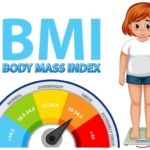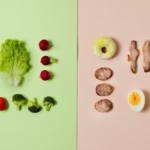If you walk down the aisle of any supermarket, then you will see shelves stacked with brightly colored boxes, packets, and cans providing you convenience, flavor, and sometimes even health.
These are ultra-processed foods (UPFs), which are products that go far beyond simple cooking or preservation.
For example, instant noodles, sugary breakfast cereals, packaged snacks, frozen pizzas, soda, and even many diet or low-fat options. They are quick, cheap, and everywhere.
But here is the hard truth: while they may save us time in the kitchen, they come at a steep cost to our health. One of the biggest risks tied to ultra-processed foods is type 2 diabetes.
What are ultra-processed foods?
Not all processed foods are bad. Freezing vegetables, pasteurizing milk, or making cheese are all forms of processing.
But ultra-processing takes it several steps further. These foods are made mostly from industrial ingredients like refined starches, added sugars, hydrogenated oils, artificial flavors, and preservatives, which you would never use in your own kitchen.
They are designed to be:
- Hyper-palatable: engineered to be very tasty with just the right combo of sugar, salt, and fat.
- Shelf-stable: packed with preservatives so they last months.
- Convenient: ready-to-eat or heat-and-serve, requiring little effort.
The catch is that these foods lack nutrients, are overloaded with additives, and are often high in calories but low in fiber, protein, and essential vitamins.
The ultra-processed food–diabetes connection
So how exactly do these foods contribute to diabetes risk? It happens through several overlapping mechanisms.
Most ultra-processed foods are loaded with added sugars, even the ones you would not expect, like pasta sauce or flavored yogurt.
These hidden sugars spike blood glucose levels, forcing the body to release more insulin. Over time, the constant pressure can lead to insulin resistance, which is actually the hallmark of type 2 diabetes.
2. Refined carbs and low fiber
UPFs rely heavily on refined flour and starches that digest quickly, flooding the bloodstream with glucose.
Fiber, which slows down your digestion process and helps regulate blood sugar, is usually stripped away during processing. That double whammy makes it harder for your body to maintain stable blood sugar levels.
3. Excess calories, easy to overeat
Because they are designed to be extra tasty and easy to eat, UPFs encourage overeating. You can plow through a bag of chips without feeling full, but you would struggle to eat the same calories in plain boiled potatoes. Overeating drives weight gain, which is one of the strongest risk factors for diabetes.
Emerging research shows that ultra-processed foods harm the gut microbiome, the community of good bacteria that support metabolism and immunity. A disrupted microbiome is increasingly linked to obesity, inflammation, and insulin resistance.
5. Inflammation from additives and oils
Many UPFs contain industrial oils (like soybean or palm oil) that, when consumed in excess, contribute to chronic inflammation.
Food additives, emulsifiers, and artificial sweeteners may also worsen inflammation and disrupt how the body regulates glucose.
What the research says
The link between UPFs and diabetes is not just speculation as it is backed by data.
● Large cohort studies in Europe and the U.S. have shown that people who consume the highest amounts of UPFs have a significantly greater risk of having type 2 diabetes compared to those who eat less.
● One French study (the NutriNet-Santé cohort) found that for every 10% increase in ultra-processed food intake, the risk of type 2 diabetes rose by about 15% [ref].
● Beyond diabetes, UPFs are linked to obesity, cardiovascular disease, and even higher overall mortality.
Why cutting ultra-processed food from your diet matters?
The sooner you cut these foods out of your diet, the better it is for you. When you replace UPFs with whole foods, like vegetables, legumes, nuts, fish, and minimally processed grains, your blood sugar levels stabilize.
Fiber slows digestion, protein keeps you full, and natural nutrients work with your body instead of against it.
Whole foods are far less calorie-dense and far more satisfying. That makes it easier to avoid overeating and maintain a healthy weight, which can in turn lower diabetes risk.
Eating whole foods rich in fiber feeds your gut bacteria, which support better insulin sensitivity and reduce inflammation.
Cutting out UPFs is not about following a fad diet; it is about adopting a way of eating that supports your health for life. The fewer engineered foods in your diet, the more control you have over what goes into your body.
Practical tips for cutting back
Eliminating UPFs entirely can feel overwhelming, but even small changes add up. Here are some practical steps:
1. If the ingredient list is long, full of additives, or includes things you do not recognize, it is probably ultra-processed.
2. Simple meals made from whole ingredients, like stir-fried veggies, grilled chicken, or oatmeal with fruit, are naturally less processed.
3. Replace soda with sparkling water, packaged snacks with nuts or fruit, and white bread with whole-grain bread.
4. Most whole foods are found around the edges of the supermarket (produce, meat, dairy) rather than in the middle aisles.
5. Having healthy meals and snacks ready makes it easier to resist the pull of convenience foods.



